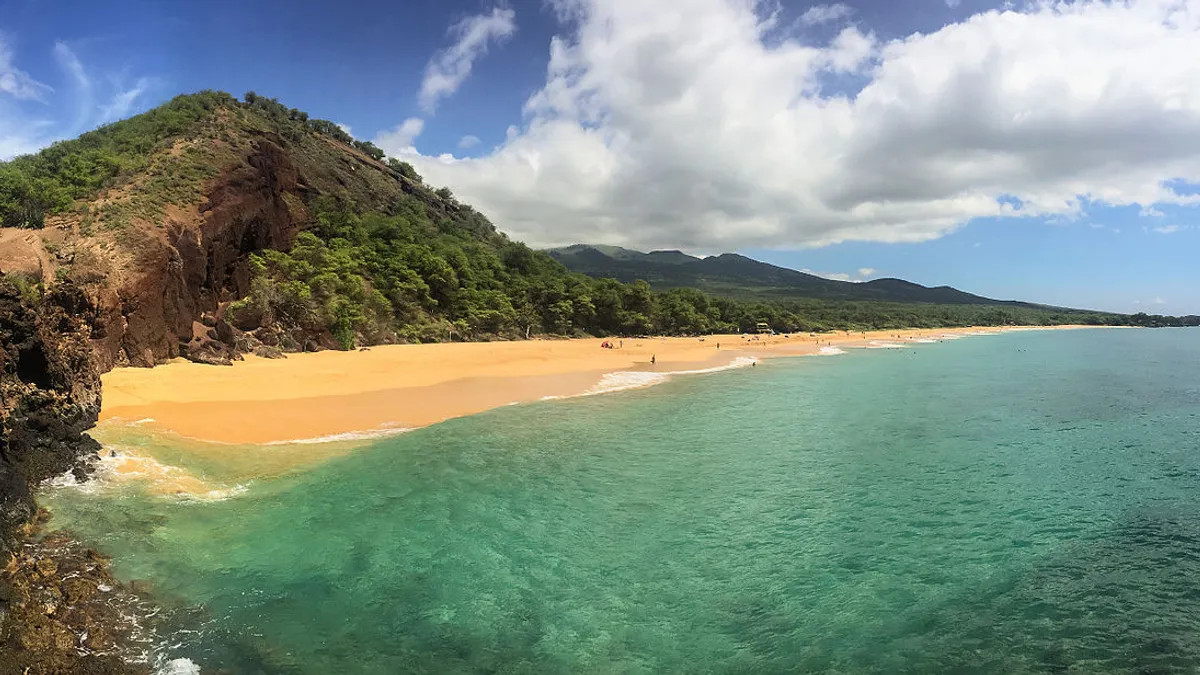Dive Brief:
- Hawaiian Electric (HECO) submitted seven solar-plus-storage projects on three islands on Thursday to the Public Utilities Commission for review, totaling over 260 MW of solar and 1 GWh of storage, the second-largest announcement of energy storage projects in the country.
- The projects' costs range from $0.08 to $0.12 per kWh, which HECO said are lower than the cost of fossil fuel generation in the state. Due to the need to import petroleum for power generation, Hawaii has some of the highest energy bills in the country.
- The projects are expected to come online in 2022, and the utility will likely be doing another request for proposals this year, "because we've got to keep the momentum going," HECO senior spokesperson Peter Rosegg told Utility Dive.
Dive Insight:
Hawaii's investor-owned utility isn't just pushing ahead on adding cleaner energy generation, it's seeking solutions for grid-edge integration.
HECO has more than 80,000 private rooftop solar systems in operation, but the islands don't have a midday peak for energy use, Rosegg said. Especially on Oahu, which he noted has the highest amount of energy use among the state's islands, the grid needs energy most from 5 p.m. to 9 p.m.
HECO's projects, a low price benchmark for renewables in the state, follow even cheaper solar+storage projects announced in the U.S. mainland over the past couple of years.
In late 2017, Xcel Energy received bids for solar-plus-storage with a median price of $0.036/kWh, and even cheaper wind-plus-storage pairings. In Tucson Electric Power's landmark $0.045/kWh contract, storage played a smaller part in the solar-plus-storage pairing than it does in the case of HECO's agreements.
And Heco is also looking to add battery storage without a renewable energy pairing, to help offset the growing amount of distributed generation on its system.
"We're investing in other storage, our own storage, that's not as closely tied to a particular project," Rosegg said.
HECO's subsidiaries have more than 500 MW of renewable energy under contract currently, and adding storage is "absolutely essential as we get on our level of renewables," Rosegg said.
"These projects are again just another trend indicator" for increasingly favorable economics, Lon Huber, energy regulatory director at Navigant, told Utility Dive.
"Here's a state that has high climate renewable goals and a lot of [distributed generation] solar, and how are they responding? They got rid of net metering... they're engaging in cost effective solar-plus-storage plays," Huber said. According to his estimates, the next states to follow Hawaii's investment in solar-plus-storage will be coastal, like California, before the trend hits the mainland, where energy prices may be lower.
Hawaii is an outlier on the pace of renewables and storage adoption, compared to other states working toward clean energy goals, as "they rely a lot on petroleum," according to Tim Fox, vice president at consulting firm Clear View Energy Partners.
| Project | Island | Developer | Size | Storage | Cost per kWh |
|---|---|---|---|---|---|
| Waikoloa Solar | Hawaii | AES | 30 MW | 120 MWh | $0.08 |
| Kuihelani Solar | Maui | AES | 60 MW | 240 MWh | $0.08 |
| Hale Kuawehi | Hawaii | Innergex | 30 MW | 120 MWh | $0.09 |
| Mililani I Solar | Oahu | Clearway | 39 MW | 156 MWh | $0.09 |
| Waiawa Solar | Oahu | Clearway | 36 MW | 144 MWh | $0.10 |
| Hoohana | Oahu | 174 Power Global | 52 MW | 208 MWh | $0.10 |
| Paeahu Solar | Maui | Innergex | 15 MW | 60 MWh | $0.12 |
SOURCE: Hawaiian Electric
In addition to the seven projects, "a smaller contract squeaked in" as part of the recent RFP process, Rosegg said, referring to a 12.5 MW solar array and 50 MWh storage system planned in West Oahu. The contract has not been signed yet, and the deal has not been submitted to regulators.
"These are the lowest prices for renewable projects we've ever contracted for, including wind, including geothermal," Rosegg said.
In its statement announcing it has submitted the deals for regulatory review, HECO compared the contracts to the $0.15/kWh rate for fossil fuel generation, which can be more volatile.
Previously, a 22-year power purchase agreement for HECO-subsidiary Maui Electric from a solar-plus-storage system was valued at approximately $0.18/kWh.
However, the new HECO projects won't be the only renewable-solar pairings to beat out oil-fired power prices on the island: AES and the Kauai Island Electric Cooperative announced in 2017 plans for a solar-plus-storage system at a $0.11/kWh rate.
Customers will see their energy costs reduced 10% to 20% on the islands of Hawaii and Maui, while customers on Oahu would see a less noticeable reduction because of their high energy use, Rosegg said.
CORRECTION: A previous version of this article had misquoted Navigant's Huber. He referred to commissioners eliminating net metering.















